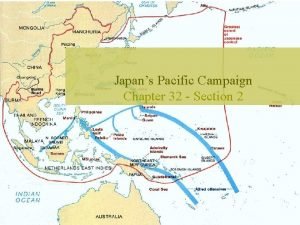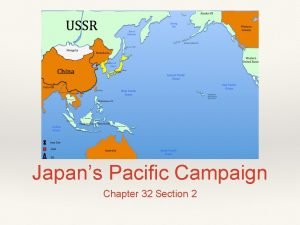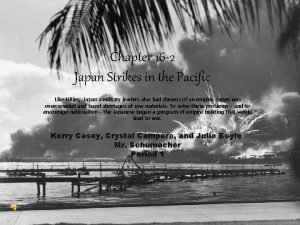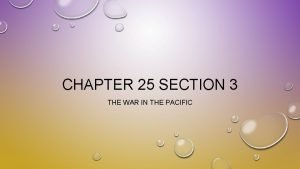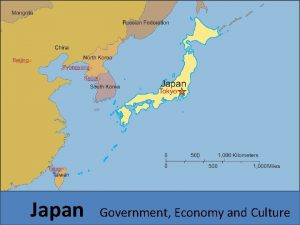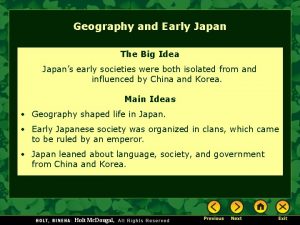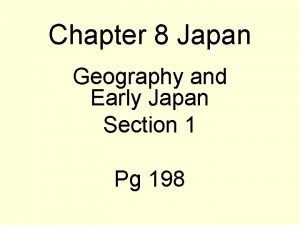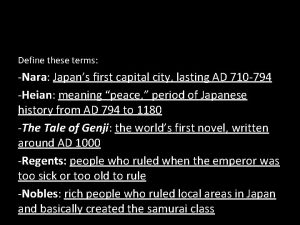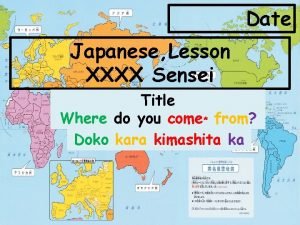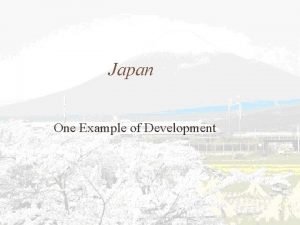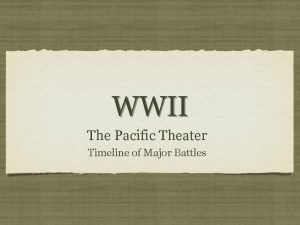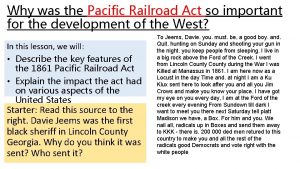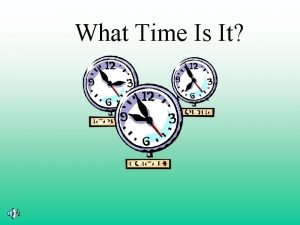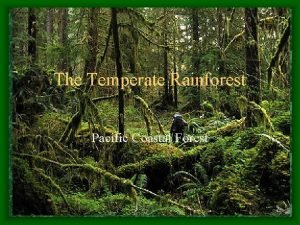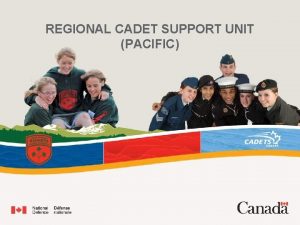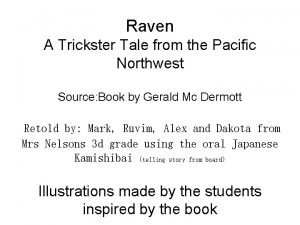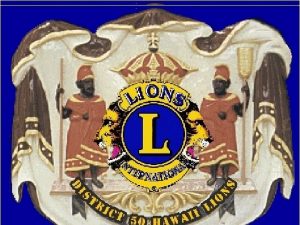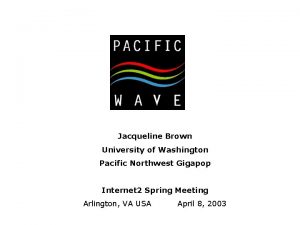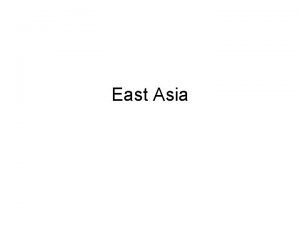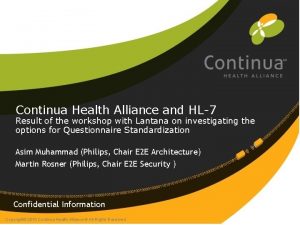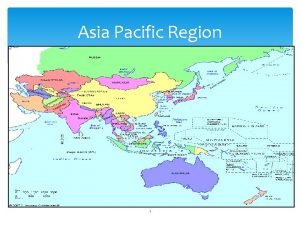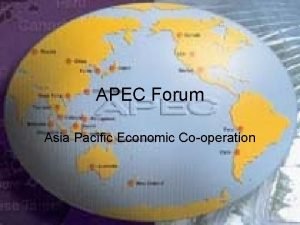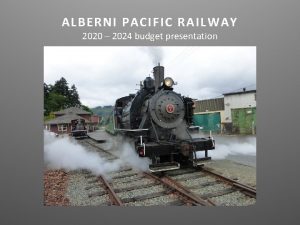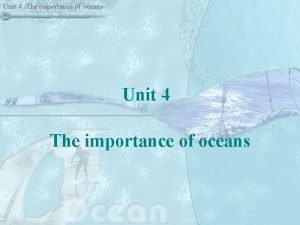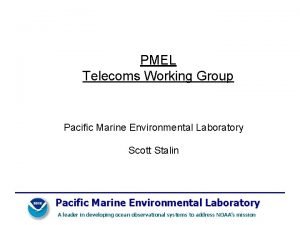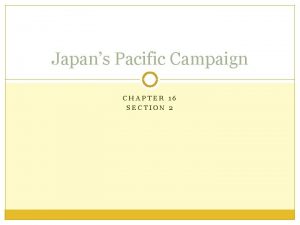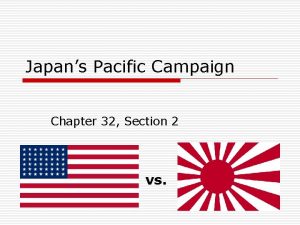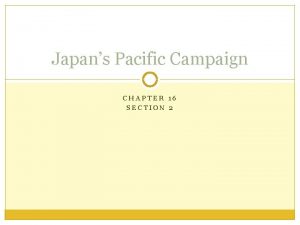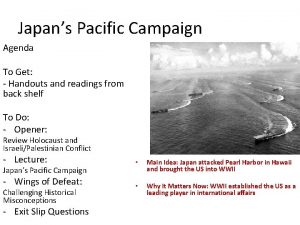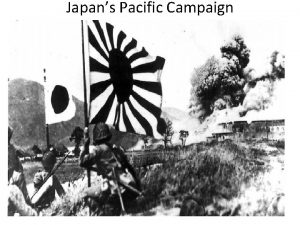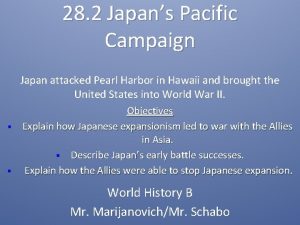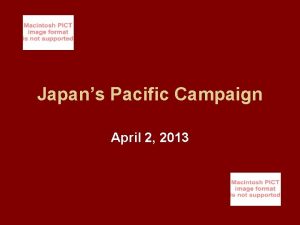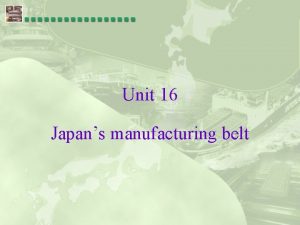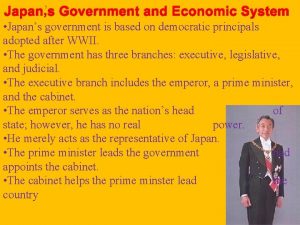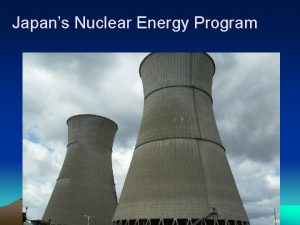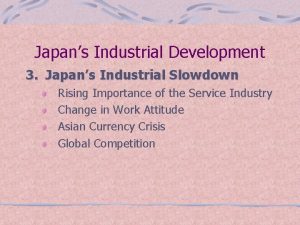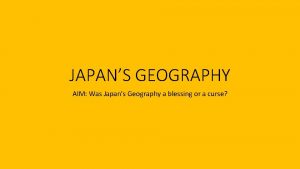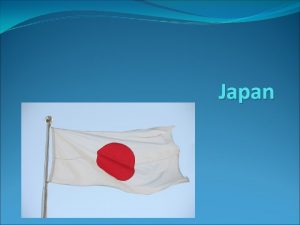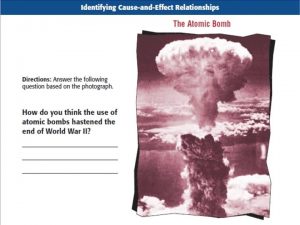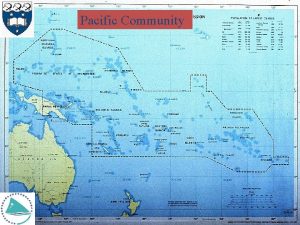Japans Pacific Campaign Chapter 32 Section 2 vs

















![U. S. Surrenders at Corregidor, the Philippines [March, 1942] U. S. Surrenders at Corregidor, the Philippines [March, 1942]](https://slidetodoc.com/presentation_image_h2/4ac9dc13d548dc1d361d50f1ee5cd04c/image-18.jpg)

![Bataan Death March: April, 1942 76, 000 prisoners [12, 000 Americans] Marched 60 miles Bataan Death March: April, 1942 76, 000 prisoners [12, 000 Americans] Marched 60 miles](https://slidetodoc.com/presentation_image_h2/4ac9dc13d548dc1d361d50f1ee5cd04c/image-20.jpg)





![Singapore Surrenders [February, 1942] Singapore Surrenders [February, 1942]](https://slidetodoc.com/presentation_image_h2/4ac9dc13d548dc1d361d50f1ee5cd04c/image-26.jpg)















- Slides: 41

Japan’s Pacific Campaign Chapter 32, Section 2 vs.

Introduction o Japan attacks Pearl Harbor in Hawaii and brings the United States into World War II

o Japan was busy conquering an empire that dwarfed Hitler’s Third Reich o Japan had conquered much of southeast Asia including the Dutch East Indies, Guam, and most of China

Surprise Attack on Pearl Harbor

Japan and the United States o Japan develops a plan for attacks on European colonies and U. S. bases o In 1941 President Franklin D. Roosevelt cuts off oil shipments to Japan. n Admiral Isoroku Yamamoto plans attack on U. S. fleet in Hawaii

Route of Japanese Fleet Attacking Pearl Harbor

Pearl Harbor

Admiral Isoroku Yamamoto

Pearl Harbor from the Cockpit of a Japanese Pilot

Pearl Harbor - Dec. 7, 1941 A date which will live in infamy!

USS Arizona, Pearl Harbor

Pearl Harbor Memorial 2, 887 Americans Dead!

Waves of the Attack o First wave, 182 planes o Second wave, 171 planes

USS Arizona Memorial

Day of Infamy o Japan attacks Pearl Harbor—U. S. Naval base in Hawaii—on December 7, 1941 o U. S. declares war on Japan December 8, 1941. o Japan also attacks Hong Kong, Thailand, and other islands

President Roosevelt Signs the US Declaration of War

Japanese Victories o Guam and Wake Island o The Philippines n Japanese attack Philippine Islands defended by U. S. , Filipino troops. n Philippine islands fall to Japanese in 1942.
![U S Surrenders at Corregidor the Philippines March 1942 U. S. Surrenders at Corregidor, the Philippines [March, 1942]](https://slidetodoc.com/presentation_image_h2/4ac9dc13d548dc1d361d50f1ee5cd04c/image-18.jpg)
U. S. Surrenders at Corregidor, the Philippines [March, 1942]

Bataan Death March o o The forcible transfer of 75, 000 American and Filipino prisoners of war in the Philippines from the Bataan peninsula to prison camps Beheadings, cut throats and casual shootings were the more common and merciful actions — compared to bayonet stabbings, rapes, disembowelments, numerous rifle butt beatings and a deliberate refusal to allow the prisoners food or water while keeping them continually marching for nearly a week in tropical heat.
![Bataan Death March April 1942 76 000 prisoners 12 000 Americans Marched 60 miles Bataan Death March: April, 1942 76, 000 prisoners [12, 000 Americans] Marched 60 miles](https://slidetodoc.com/presentation_image_h2/4ac9dc13d548dc1d361d50f1ee5cd04c/image-20.jpg)
Bataan Death March: April, 1942 76, 000 prisoners [12, 000 Americans] Marched 60 miles in the blazing heat to POW camps in the Philippines.

Pictures of the Bataan Death March

Propaganda Poster in the U. S. after the Bataan Death March

Bataan Death March Memorial “The Battling Bastards of Bataan”

Gains in Many Places o Japan captures British holdings, including Hong Kong and Singapore. o Japan conquers the Dutch East Indies which is rich in minerals o Japan captures Burma. This threatens India, Britain’s main possession in Asia. o Japanese forces treat conquered peoples and prisoners of war brutally

Pacific Theater of Operations
![Singapore Surrenders February 1942 Singapore Surrenders [February, 1942]](https://slidetodoc.com/presentation_image_h2/4ac9dc13d548dc1d361d50f1ee5cd04c/image-26.jpg)
Singapore Surrenders [February, 1942]

The Burma Campaign General Stilwell Leaving Burma, 1942 The “Burma Road”

Doolittle Raid o U. S. bombers attack Tokyo and other Japanese cities in April 1942. n (Here Lt. Col. James H. Doolittle wires a Japanese medal to a bomb, for "return" to its originators in the first U. S. air raid on the Japanese Home Islands. ) o Raid does little damage, but shows that Japan is vulnerable.

Lt. Col. Jimmy Doolittle: First U. S. Raids on Tokyo, 1942

Allies Turn the Tide o Battle of the Coral Sea—Americans stop Japanese advance, May 1942. o New kind of naval warfare—ships launch planes to fight each other (see next slide).

Battle of the Coral Sea: May 7 -8, 1942

Bombers do not engage each other, but pass each other on the way to the enemy aircraft carrier.

The Allies Strike Back o The Battle of Midway n Japanese send powerful fleet to capture Midway Island. n Battle of Midway—U. S. destroy half of Japan’s aircraft carriers causing Japan to retreat.

Battle of Midway Island: June 4 -6, 1942

Battle of Midway Island: June 4 -6, 1942

An Allied Offensive o Mac. Arthur’s Plan n Douglas Mac. Arthur —American army commander in the Pacific. n He plans to “islandhop” past strongholds in order to attack weaker Japanese bases.

Allied Counter-Offensive: “Island-Hopping”

“Island-Hopping”: US Troops on Kwajalien Island

Guadalcanal n. Battle of Guadalcanal—hellish battle that ends in Allied victory.

Guadalcanal Diary (book and film) o o o Hollywood cooperated with the war effort by producing films to build the morale of the American people. Released in 1943. The film recounts the fight of the United States Marines in the Battle of Guadalcanal, which occurred only a year before the movie's release. While the film has notable battle scenes, its primary focus is on the characters and back stories of the Marines.

Farthest Extent of Japanese Conquests
 Japan's pacific campaign chapter 32 section 2
Japan's pacific campaign chapter 32 section 2 Japan's pacific campaign chapter 32 section 2
Japan's pacific campaign chapter 32 section 2 Chapter 16 section 2 japan strikes in the pacific
Chapter 16 section 2 japan strikes in the pacific Chapter 25 section 3 the war in the pacific
Chapter 25 section 3 the war in the pacific Japans educational system
Japans educational system Japan government type
Japan government type Japans physical geography
Japans physical geography How did prince shotoku unify the japanese people?
How did prince shotoku unify the japanese people? Meaning of nara in japanese
Meaning of nara in japanese Xxxx.com japanese
Xxxx.com japanese Japans geography
Japans geography Japans isolation
Japans isolation Chapter 10 meiosis 1 and meiosis 2
Chapter 10 meiosis 1 and meiosis 2 Pacific theater timeline
Pacific theater timeline The pacific railroad act of 1862
The pacific railroad act of 1862 Where does the pacific time zone start
Where does the pacific time zone start Pacific temperate rainforest map
Pacific temperate rainforest map All non zero digits are significant
All non zero digits are significant Sidney pacific mit
Sidney pacific mit Schaeffler korea
Schaeffler korea Serial killers pacific northwest
Serial killers pacific northwest Regional cadet support unit pacific
Regional cadet support unit pacific Raven a trickster tale from the pacific northwest
Raven a trickster tale from the pacific northwest Pacific lions club
Pacific lions club Pacific university dental hygiene
Pacific university dental hygiene Ring of fiee
Ring of fiee Pacific behavioral health
Pacific behavioral health Azusa pacific university school of nursing
Azusa pacific university school of nursing Pacific northwest gigapop
Pacific northwest gigapop Country with lowest obesity rate
Country with lowest obesity rate Pacific rim 1
Pacific rim 1 Pacific rim2 cda
Pacific rim2 cda Pacific islander inventions
Pacific islander inventions Asia pacific region
Asia pacific region Asia pacific economic forum
Asia pacific economic forum Alberni pacific railway
Alberni pacific railway Acn pacific
Acn pacific Where is the circum pacific belt located
Where is the circum pacific belt located University mobility in asia and the pacific
University mobility in asia and the pacific Importance of pacific ocean
Importance of pacific ocean Thought patterns for a successful career pacific institute
Thought patterns for a successful career pacific institute Pacific marine environmental laboratory
Pacific marine environmental laboratory
